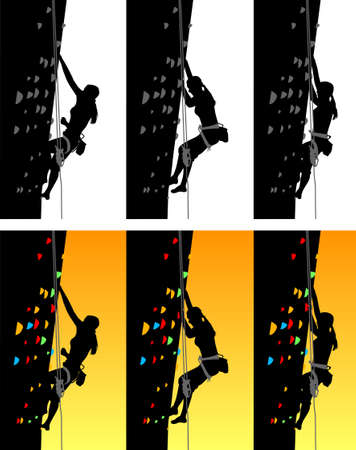Introduction to Backpacking Styles
Backpacking is one of the most beloved ways to experience America’s great outdoors, from the rugged Rocky Mountains to the lush forests of the Pacific Northwest. In the United States, backpacking isn’t just about getting from point A to point B—it’s a lifestyle choice that lets you connect with nature, challenge yourself, and escape everyday life. There are two main ways people hit the trails: solo backpacking and group backpacking. Each style has its own unique vibe and draws a different kind of adventurer.
Solo backpacking is all about independence and self-reliance. Many Americans are drawn to solo trips for the freedom it offers—setting your own pace, choosing your route, and having time alone with your thoughts. It’s popular among folks who want a personal challenge or who crave peace and quiet away from the crowds.
Group backpacking, on the other hand, is a social adventure. Whether it’s friends, family, or fellow outdoor enthusiasts, hitting the trail as a group means sharing experiences, splitting responsibilities, and enjoying the company of others. This style is especially popular in U.S. hiking clubs, college outing programs, and among those new to backpacking who value safety in numbers.
Quick Comparison: Solo vs. Group Backpacking
| Style | Main Appeal | Popular With |
|---|---|---|
| Solo Backpacking | Freedom, self-discovery, solitude | Experienced hikers, introverts, adventure-seekers |
| Group Backpacking | Camaraderie, safety, shared tasks | Beginners, social hikers, families & friends |
No matter which style you choose, backpacking is an iconic part of American outdoor culture—a way to unplug, reconnect with nature, and make memories that last a lifetime.
2. The Pros and Cons of Solo Backpacking
Why Go Solo?
Backpacking alone is a unique adventure that offers freedom and self-discovery. For many outdoor enthusiasts across the U.S., heading out on your own means you call all the shots—when to start, where to camp, how far to hike, and when to just soak in the view. But solo trips aren’t just about independence; they also come with special challenges you should consider before lacing up your boots.
Main Advantages of Solo Backpacking
| Advantage | What It Means |
|---|---|
| Complete Freedom | No need to compromise on route, pace, or schedule—you’re in charge every step of the way. |
| Self-Reliance | You learn to trust your instincts and sharpen survival skills, from navigation to camp setup. |
| Personal Growth | Pushing your limits solo can boost confidence and provide real moments of self-reflection. |
| Peace and Quiet | The trail feels different alone—less noise, fewer distractions, more connection with nature. |
Challenges and Concerns When Hiking Alone
| Challenge | What to Watch Out For |
|---|---|
| Safety Risks | No one to help if you get hurt or lost; it’s important to have a plan and let someone know where you’ll be. |
| Lack of Backup | If gear breaks or weather shifts, there’s no partner to brainstorm solutions with. |
| Emotional Highs & Lows | Solo hikes can get lonely, especially during tough stretches; some find it empowering, others struggle with the solitude. |
| Logistics Challenges | You’ll carry all your own gear and handle camp chores solo—it can be physically demanding over several days. |
Is Solo Backpacking for You?
If you crave independence and don’t mind extra responsibility, solo backpacking could be a rewarding way to hit the trail. It’s a chance to unplug and truly challenge yourself—but make sure you’re ready for both the freedom and the risks that come with going it alone.

3. The Pros and Cons of Group Backpacking
Backpacking with a group can be a totally different experience compared to hitting the trail solo. Whether you’re hiking with close friends, family, or new acquaintances, there are unique benefits and challenges that come with sharing your adventure. Let’s break down what it’s really like to backpack with others in the U.S., from teamwork and fun to those occasional group disagreements.
Benefits of Group Backpacking
- Camaraderie and Shared Memories: Hiking with others often leads to lasting friendships and inside jokes. Campfire stories, shared meals, and tackling tough climbs together create memories you’ll cherish for years.
- Shared Responsibilities: In a group, you can split up chores like setting up tents, cooking meals, or filtering water. This teamwork lightens the load—both literally and figuratively—so everyone has more energy for the trail.
- Safety in Numbers: There’s added peace of mind when you have others looking out for you. In case of injury or emergency, someone is there to help or go get assistance.
- Diverse Skills: Groups often include people with different strengths—navigation skills, first-aid know-how, or killer camp-cooking recipes—which can make the trip smoother and more enjoyable.
Drawbacks of Group Backpacking
- Pace and Preferences: Not everyone hikes at the same speed or has the same interests. Some might want to cover lots of miles, while others prefer slow mornings and long lunch breaks.
- Group Dynamics and Conflicts: Spending days together in close quarters can test patience. Disagreements about route choices, meal plans, or campsite selection are common. Good communication is key but not always easy on tired legs.
- Less Flexibility: It’s harder to change plans spontaneously when you need group consensus. Want to linger at a scenic overlook? You might need to convince everyone else first.
- Noise and Impact: More people usually means more noise—and possibly more impact on the environment if not everyone follows Leave No Trace principles.
Quick Comparison: Pros & Cons of Group Backpacking
| Pros | Cons |
|---|---|
| Camaraderie & shared experiences | Pace & preference conflicts |
| Shared responsibilities (gear, chores) | Group dynamics & potential arguments |
| Safety in numbers | Less flexibility in planning |
| Diverse skills & knowledge | Bigger environmental footprint if not careful |
Tips for Making Group Trips Work Smoothly
- Set expectations early: Talk about goals, pace, and daily routines before you hit the trail.
- Communicate openly: Share concerns or preferences honestly so issues don’t build up.
- Divide responsibilities: Assign tasks based on strengths and keep things fair.
- Respect each other’s space: Even in a group, it’s okay for folks to hike alone for a while or take some solo downtime at camp.
4. Key Factors to Consider When Deciding
Choosing between solo and group backpacking isn’t always a simple decision. It depends on several important factors that can shape your experience on the trail. Here are some key things to think about before you pack your bag.
Experience Level
Your backpacking experience plays a big role in what’s right for you. If you’re new to backcountry hiking, going with a group can give you support, guidance, and confidence. Experienced hikers might enjoy the freedom and challenge of heading out alone.
| Experience Level | Solo Backpacking | Group Backpacking |
|---|---|---|
| Beginner | Can be risky; requires solid prep and skills | Safer; learn from others, share responsibilities |
| Intermediate | Possible with good planning and knowledge of trails | Offers both support and shared fun |
| Advanced | Ideal for those seeking adventure and solitude | Great for group dynamics or tackling challenging routes together |
Trip Goals & Personal Preferences
Think about what you want from your backpacking trip. Do you crave quiet reflection and self-reliance, or is bonding with friends and sharing memories more important?
- If you value independence: Solo trips let you set your own pace, choose your route, and change plans on a whim.
- If you love camaraderie: Group trips offer companionship, laughter around the campfire, and shared tasks like cooking or setting up tents.
Destination & Terrain
The type of terrain and remoteness of your chosen trail matter. Some destinations are more suited to groups due to their difficulty, isolation, or wildlife risks. Others—like well-marked trails in busy parks—are perfect for solo adventurers.
| Trail Type | Solo Suitability | Group Suitability |
|---|---|---|
| Crowded National Parks (e.g., Yosemite Valley) | Good for solo hikers; help is nearby if needed | Fun for groups too, but may feel crowded at campsites |
| Remote Wilderness (e.g., Alaska backcountry) | Difficult solo; requires advanced skills, safety gear | Recommended for groups due to safety concerns |
| Mild Trails (e.g., Appalachian Trail sections) | Great for solo or small groups; lots of support along the way | Flexible; both approaches work well here |
Safety Considerations
No matter how experienced you are, safety should always be top of mind. Solo backpackers need to prepare for emergencies—know basic first aid, carry a map or GPS, and tell someone your plans. Groups benefit from having multiple people in case something goes wrong, but group dynamics can sometimes slow down decision-making.
- Solo Safety Tips: Check weather reports, bring extra supplies, consider carrying a satellite communicator.
- Group Safety Tips: Assign roles (navigator, medic), agree on emergency plans, stay together especially in tough conditions.
The Bottom Line: Match Your Approach to Your Needs
The best way to choose between solo and group backpacking is to honestly assess your experience level, goals, destination, and comfort with risk. Think about what matters most to you—whether it’s independence or teamwork—and plan accordingly for a safe and enjoyable trip.
5. Tips for Making Your Experience Successful
Whether you choose to hit the trail alone or with friends, there are some tried-and-true tips that can help ensure your backpacking adventure in the U.S. is safe, fun, and memorable. Here are practical ways to maximize your enjoyment and stay safe based on common practices in the American outdoor community.
Plan Ahead and Prepare
- Research Your Route: Know your trail, terrain, distance, and water sources before heading out.
- Check Permits and Regulations: Many U.S. parks require permits for overnight trips—don’t skip this step!
- Weather Watch: Check the forecast and be ready for quick weather changes, especially in mountainous regions.
Pack Smart
| Essentials | Solo Backpacking | Group Backpacking |
|---|---|---|
| Navigation (map/compass/GPS) | Carry your own set | At least two people should have navigation tools |
| First Aid Kit | Pocket-sized personal kit is a must | Larger shared kit plus individual basics |
| Shelter | Lightweight solo tent or bivy | Share tents to save weight, but have backup emergency shelter |
| Food & Water Treatment | Pack all meals/snacks yourself and a filter or tablets | Diversify food options; share cooking gear but bring extra treatment methods |
| Emergency Gear (whistle, headlamp) | Carries everything yourself | No gear should be “group only”—everyone needs basics on them |
Safety Practices Everyone Should Follow
- Leave No Trace: Always pack out trash and minimize impact to trails and campsites.
- Tell Someone Your Plan: Share your itinerary with a friend or family member—even if you’re going with a group.
- Pace Yourself: Don’t push too hard; listen to your body whether solo or with others.
- Stay Together (in Groups): Don’t split up without a plan. Use buddy systems when exploring away from camp.
- Wildlife Awareness: Know how to store food safely and what to do if you encounter animals like bears or snakes.
- Cultural Respect: Respect Indigenous lands, local guidelines, and other hikers’ experiences on the trail.
Mental Preparation and Flexibility
- Solo: Embrace solitude by bringing a journal or book. Be mentally ready for quiet time and problem-solving on your own.
- Group: Communicate openly, share responsibilities, and be flexible with plans or pace as needed for group harmony.
Pro Tip: Join Local Outdoor Groups or Take Classes!
If you’re new to backpacking—solo or with a crew—many American communities offer free meetups, skills workshops, and guided hikes through organizations like REI Co-op, Sierra Club, and local hiking clubs. These are great ways to learn best practices and meet like-minded adventurers!


